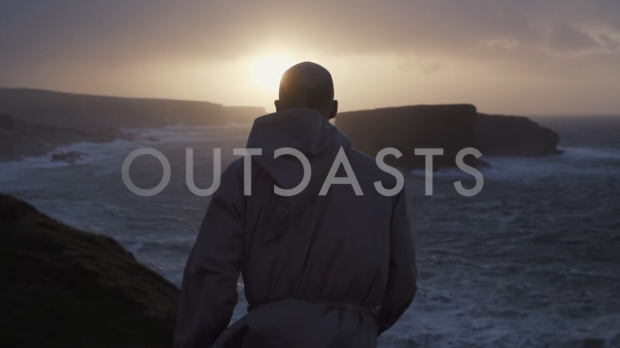After a bitter and bizarre election year, America is hungry for answers. People are earnestly trying to get their heads around what happened this year, and why, and what it means for our future.
But every answer – whether it’s the collapse of neoliberalism, a resurgence in bigotry and nativism, or a social media-driven backlash against the ruling class – feels incomplete. It may give us part of the story, but not the whole story.
The day before the election, Tom Hoopes told that story, a story that –
– the media simply doesn’t report on.It’s this: Affliction is everywhere. The “violence and vitriol” of the election, Hoopes noted, are just symptoms of that affliction. Everywhere you look, across any and all boundaries, people are hurting. They’re hurting financially, socially, physically, mentally, emotionally, and above all, spiritually. And hurt people, as the saying goes, hurt people.
Hoopes, quoting Archbishop Samuel Aquila, finds hope in a different kind of movement: “the Francis Option,” which brings “God’s forgiveness to those on the spiritual and material outer limits of society, while also strengthening the health of our local communities with the balm of God’s mercy.”
Just two days after the election, I caught a glimpse of what might be called ground zero of the Francis Option, and what I saw was not just pious talk. I saw an explosive and – in every sense of the word – concrete revolution of tenderness loosed on a hurting world.
The atmosphere at a parish center in Babylon, New York was talkative, jovial, even giddy. Politics seemed the furthest thing from people’s minds; instead, everyone had come to catch a new documentary from an extraordinary group of filmmakers (
, ) about an extraordinary group of people: the Franciscan Friars of the Renewal, a small but very active order of friars founded in the South Bronx.After an epigraph from the first chapter of John – “The light shines in the darkness, and the darkness has not overcome it” – the film opens on the friars deep in prayer in a chapel. The blaring of distant sirens breaks the quiet, pulling us into a montage set to the dark, grunge-gospel track
. Gliding shots of the friars walking destitute New York streets are interspersed with images of all of the dynamism, confusion, and despair of some of the poorest communities in the world. These are not just places the friars visit; these are places they call home. And right from the get-go, Outcasts refuses to shield our eyes from what happens there.Read more…“24 Hours: A Rare Look into the Life of a Friar”
The first segment takes us to the Bronx and Harlem, where the friars provide food, shelter, and drug counseling to people on the streets with nowhere to turn. Two poignant subplots focus on a young man slowly losing a brother born with AIDS, and an older man busking with a blues guitar on street corners. For both men, the friars in their gray, hooded habits are material and spiritual rocks: they give their time, give communion and prayer, give food and a room, give hope.
What is it about St. Francis and this order that called these men to become friars? One young friar admits that it’s the simplicity of their witness. There is no muddling the message in Francis or the order: their life is a life of total poverty, a total love for God and the Gospel, and the total belief that love can transform even the darkest corners of the world.
That belief brings the friars across the pond to Moyross, Ireland, a community one local calls “hell.” They don’t arrive in spite of all the poverty, gun violence, burned out cars, and drugs. They arrive, as one friar says with a chuckle, because of it. The residents are convinced that these must be undercover cops – why else would anyone come to Moyross? – but over time, the friars become respected change agents and conduits of grace. The same is true in Comayagua, Honduras, where we follow the friars into a local prison known for a 2012 fire that killed hundreds of inmates. The friars pray, preach, and visit with perpetrators of some of the most violent crimes imaginable, armed with nothing but the peace of God.
Maybe the most powerful scene of the film comes in Bradford, England, where the St. Pio Friary offers food and basic assistance to locals saddled by drug addiction or forced into prostitution. The camera crew later follows one young woman, aged by years of drug addiction, into a crack house. As the high hits, we see idyllic scenes of a loved, happy, care-free little girl – the girl that this woman once was, or maybe the girl she wanted to be. Either way, we’re faced with the same haunting question: Who could this person have been if instead of abuse and disregard, she was shown love? After the credits rolled, one of the friars – two were in attendance to answer questions – stood up and called out this scene as key to the film and to the order’s work. This image, he explained, remained with him, because it spoke to the mysterious dignity of every afflicted life.
That’s a message that the world desperately needs to hear right now, and one that Grassroots Films and the friars are traveling all over the US and Europe to deliver.
To find a prescreening near you, visit outcaststhemovie.com.

